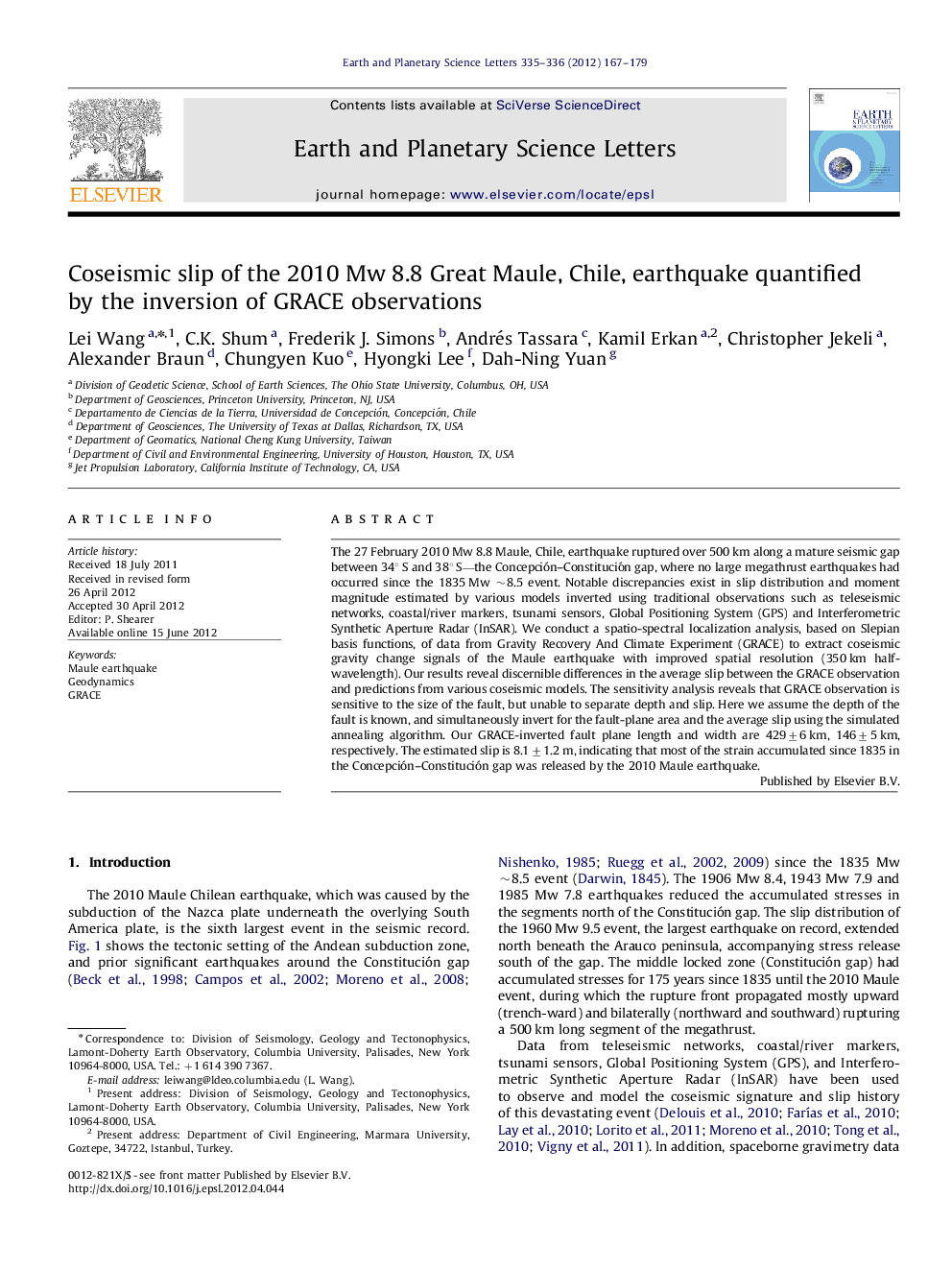| Article ID | Journal | Published Year | Pages | File Type |
|---|---|---|---|---|
| 4677520 | Earth and Planetary Science Letters | 2012 | 13 Pages |
The 27 February 2010 Mw 8.8 Maule, Chile, earthquake ruptured over 500 km along a mature seismic gap between 34° S and 38° S—the Concepción–Constitución gap, where no large megathrust earthquakes had occurred since the 1835 Mw ∼8.5 event. Notable discrepancies exist in slip distribution and moment magnitude estimated by various models inverted using traditional observations such as teleseismic networks, coastal/river markers, tsunami sensors, Global Positioning System (GPS) and Interferometric Synthetic Aperture Radar (InSAR). We conduct a spatio-spectral localization analysis, based on Slepian basis functions, of data from Gravity Recovery And Climate Experiment (GRACE) to extract coseismic gravity change signals of the Maule earthquake with improved spatial resolution (350 km half-wavelength). Our results reveal discernible differences in the average slip between the GRACE observation and predictions from various coseismic models. The sensitivity analysis reveals that GRACE observation is sensitive to the size of the fault, but unable to separate depth and slip. Here we assume the depth of the fault is known, and simultaneously invert for the fault-plane area and the average slip using the simulated annealing algorithm. Our GRACE-inverted fault plane length and width are 429±6 km, 146±5 km, respectively. The estimated slip is 8.1±1.2 m, indicating that most of the strain accumulated since 1835 in the Concepción–Constitución gap was released by the 2010 Maule earthquake.
► Spatio-spectral localization analysis can efficiently extract the coseismic gravity change. ► The fault plane size and average coseismic slip are estimated using GRACE observation. ► Most of the accumulated strain since 1835 has been released by the Maule earthquake.
